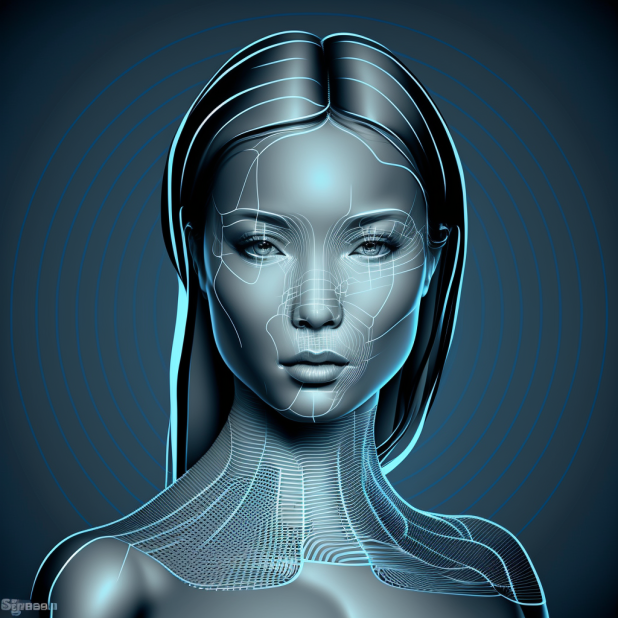

Your face tells a story, from genetic and ethnic markers to age and life experiences. But there’s more value in it than you might realize—especially when intelligent technology gets involved. That technology? Facial recognition analytics.
Facial recognition uses biometrics to map facial features—including 42 points above the nose—and prove or disprove someone’s identity compared to reference material such as photos and videos. But how does it really work, and how can we use it to transform our view of the world? Let’s take a deep dive into the story that facial recognition analytics can tell, and explore how you could use it, too.
How Facial Recognition Works
Facial recognition analytics is highly detailed in how it collects facial data and uses it to figure out who’s who. It comes down to two things: image capture and database comparison.
Image Capture
For facial recognition to work, it needs a frame of reference, whether that’s a picture of an individual alone or even in a crowd. Once it has an image of a face, facial recognition analytics gets to work reading the geometry of that face. There are numerous points of recognition or facial landmarks to be read, from the space between your eyes to the distance between your forehead and chin. Think of it like a facial signature or facial fingerprint—no two are exactly alike.
Database Comparison
A facial signature gets fed into a facial recognition system database—at the door or in a crowd, depending on the needs of the location—in an effort to make a match against seemingly countless images of known faces. And it’s accurate, too. As of 2020, the National Institute of Standards and Technology (NIST) showed that top face identification algorithms were only wrong 0.08 percent of the time.
Facial Recognition Analytics Use Cases
So what’s the real value of facial recognition? In truth, the applications are endless, but several particular areas are already benefiting significantly. The common theme? Identifying individuals you want to know more about—whether they’re criminals or VIP guests.
Law Enforcement
With facial recognition technology, law enforcement officers find that suddenly their job isn’t all about sifting through mugshots or conducting lengthy interviews. Instead, facial recognition analytics tells investigators whether someone is a criminal or not, supplementing that human-level analysis to help them find suspects more quickly.
According to the NIST, forensic examiners perform best with assistance from facial recognition. After all, human beings can only recognize an average of 150 faces—and we’re also flawed. We get excited or distracted, and we forget details. By contrast, facial recognition just compares facial images.
Airport Security
Airports have more and more reasons to deploy facial recognition analytics. U.S. Customs and Border Protection and airport officials are matching passport photos to a database to verify if travelers are who they claim to be.
A primary motivator is to not only enhance airport security but also tighten border security. Biometric screening is deployed at security gates across 205 airports for air entry and at 32 airports for air departure. As a result, these facilities are better equipped to detect passport fraud, human trafficking, and smuggling.
But these are far from the only applications of facial recognition technology. Mobile devices already use it for security, and retail stores can deploy facial recognition to reduce theft.
Casino Security
Gaming venues can also benefit from facial recognition analytics. The best facial recognition software platforms can help venues create a secure environment, reduce crime, and learn more about patrons. This learning starts at the door with ID scanning software, such as eConnect’s eClear® ID Scan, which helps you spot the VIPs you want to engage with the most when they arrive, and keep an eye on—or eject—bad actors.
However, security risks aren’t over once patrons are in the door. Facial recognition analytics works through security cameras to log every visitor and track KYC metrics so you can identify criminals or self-excluded players and check in on high rollers. Plus, if you also deploy POS monitoring, you can increase your security and identification capabilities even more.
Your facial recognition solution needs to integrate seamlessly with all major video management systems. With eConnect, even if part of your setup includes technologies from manufacturers such as Aloha, Oracle, Kronos, or other top names, it’s simple to plug and play without skipping a beat.
Get into Facial Recognition with eConnect
From snapping a reference photo to comparing it to hundreds, thousands, or even millions of images in sophisticated databases, facial recognition has the power to make identification less like searching for a needle in a haystack and more like finding an elephant in a barn. When it’s deployed correctly, facial recognition can make everyone feel safer and more secure.
Could eConnect be the security solution you’ve been waiting for? Tune into our “Facial Recognition - Beyond Human Limitations with AI” webinar to learn more, and get in touch with an expert to explore your options.
Written by









